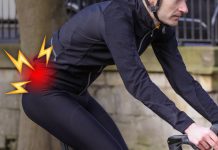There are a lot of things to keep in mind when cycling or walking down the street: rules of the road, other users and now breathing, according to a University of British Columbia study.
Assistant professor Alex Bigazzi suggests that cyclists looking to get the most benefits from their exercise need to control how much motor vehicle exhaust they are inhaling while still exerting themselves enough to minimize how much pollution they are inhaling.
“When you’re cycling faster or walking faster, you’re exerting more energy and of course, you’re going to be breathing harder and and breathing at a higher rate,” he told All Points West host Robyn Burns.
“But at the same time, you get there quicker and get out of the polluted roadway environment sooner.”
Bigazzi developed a model to find the “sweet spot” in terms of travel speed, and says it generally falls between 13-15 km/h for cycling, and three to five km/h for walking, which is a moderate level of exercise intensity for most.
He says a good way to judge your intensity is the “talk test”: if you can hold a conversation but don’t have enough breath to sing, you’re probably at a moderate level of intensity.
He also says in areas of low pollution, you can increase speed without worrying about inhaling more pollution.
The optimal speed varies based on age and gender, Bigazzi says, and his research, published in the International Journal of Sustainable Transportation, found the following “sweet spot” speeds:















